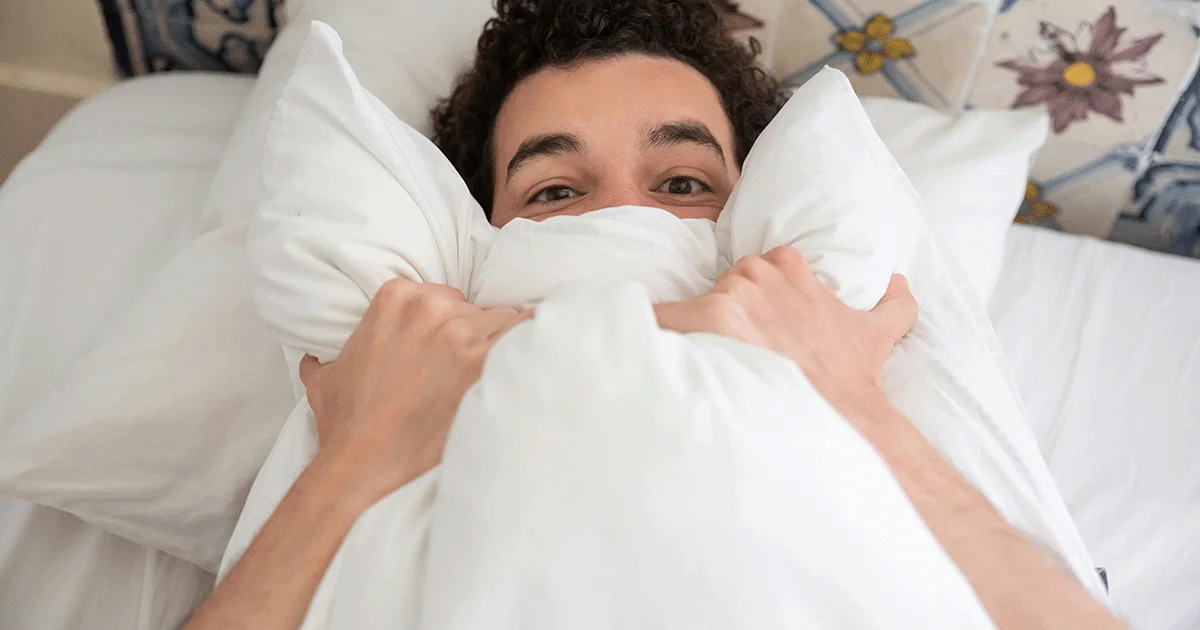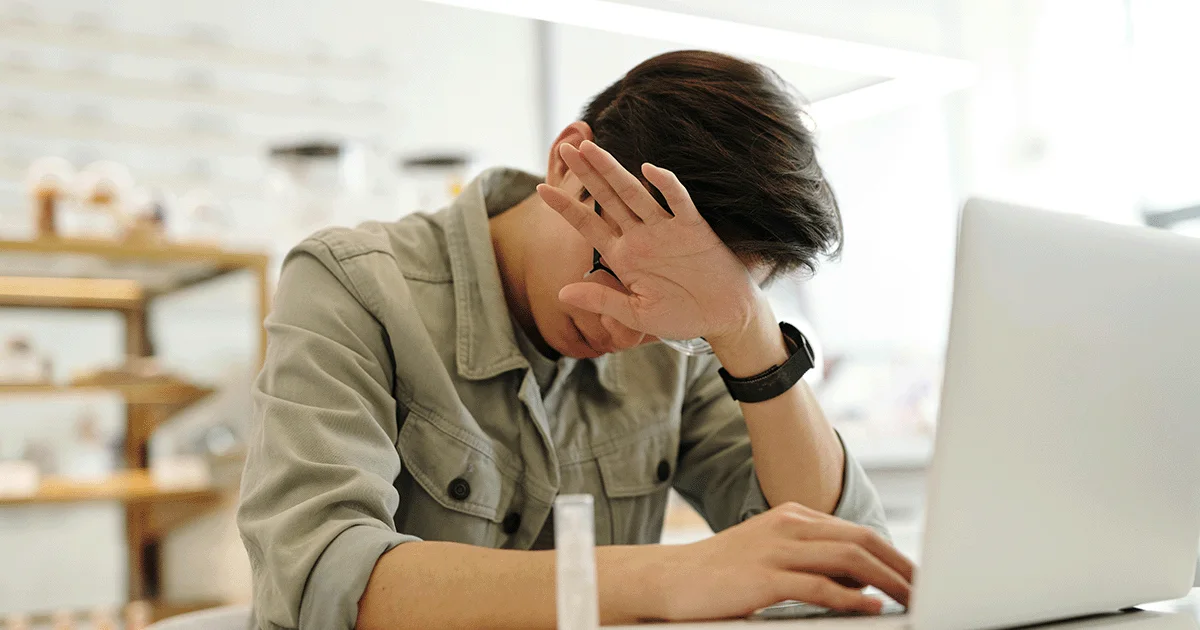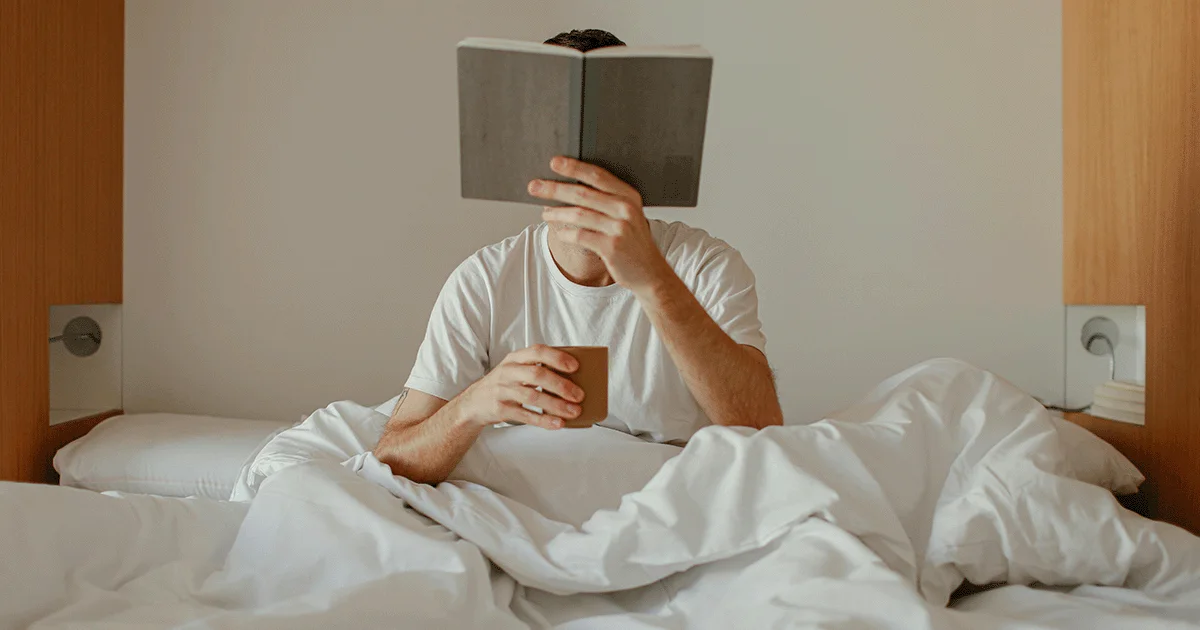Here's what we'll cover
Here's what we'll cover
Most people will view pornography at some point in their lives. Many even choose to incorporate it into a regular part of their adult sex life. However, some people may lose control of their use and develop a porn addiction.
Pornography addiction isn’t an official diagnosis, and researchers are just starting to define it and look for effective treatments.
Here’s what we know about what causes pornography addiction, the symptoms, and how you can treat it.
What is porn addiction?
Pornography use comprises various sexual activities, including watching pornography, online pornography exchange, engaging in sex chats, and using sex webcams. The most popular of these activities is watching pornography (Chen, 2020).
For most people, this can be a part of a completely normal adult sex life. For others, porn use can become compulsive and result in feeling like you can’t stop watching it despite its negative effects on your life (Chen, 2020).
There is no one name to describe this condition. Some terms that have been used include (Chen, 2020):
Internet sex addiction
Problematic online sexual activities
Cybersex addiction
Problematic pornography usage (PPU)
Problematic online pornography use (POPU)
Porn addiction is considered a behavioral addiction. While “addiction” has usually been associated with drugs or alcohol, research now shows that some behaviors can affect the same reward, motivation, and memory circuits in the brain (Love, 2015).
The American Society of Addiction Medicine (ASAM) has expanded its definition of addiction to include behavioral addictions. The American Psychiatric Association (APA) has acknowledged behavioral addictions in its Diagnostic and Statistical Manual of Mental Disorders, 5th edition (DSM-5). Still, it hasn’t developed criteria for pornography addiction (Love, 2015).
What are some of the signs of porn addiction?
There are no official criteria for addiction to viewing porn, but the symptoms are similar to those of drug and alcohol addiction. These include (Kraus, 2016):
Spending excessive time thinking about, planning to view, or viewing pornography
Repetitive, but unsuccessful, efforts to control or reduce how often you watch porn
Repeatedly using porn despite the potential consequences (for example, while at work)
Repeated use of pornography in response to a low mood
Repeated use of pornography in response to stressful life events
Frequency of pornography use causes significant distress or impairs you in important areas of your life
If you find yourself exhibiting any of these symptoms, reach out to a mental healthcare provider. They can help you come up with a plan to reduce or stop your use.
What causes online porn addiction?
Behavioral addictions share many similar characteristics with substance use disorders. Behaviors, such as looking at porn, can produce short-term rewards that can lead a susceptible person to increase that behavior despite adverse side effects (Grant, 2010).
No one knows exactly what causes addiction, but researchers think it's caused by the complex interaction of factors in the brain, including (Grant, 2010):
Personality
Family history
Genetics
Other psychiatric disorders or substance addictions
Functional MRI studies on the brains of individuals seeking treatment for porn addiction found that participants exhibited higher motivational behavior for cues that predicted erotic content. They also noted a much higher expected reward from viewing the content than participants without a pornography addiction (Gola, 2017).
The compulsion to watch porn wasn’t related to actually “liking” that content. These findings were similar to what’s seen in people with substance addiction (Gola, 2017).
What are the potential consequences of porn addiction?
Compulsively using pornography can lead to various negative consequences depending on how and when you are using it. These can include trouble with (Chen, 2020):
Finances
Legal issues
Employment
Relationships
This addiction can lead you to feel a loss of control and continuing to use despite the adverse outcomes (Chen, 2020).
People with a pornography addiction may try to control or reduce their use. Sometimes, difficulty controlling their use can cause significant mental distress. This distress can lead the person to turn back to porn to soothe the discomfort (Bőthe, 2020).
Multiple studies have reported no significant association between frequent pornography use and decreased sexual functioning in men. More research is needed on porn addiction in women. However, one study that looked at problematic pornography use (which was causing stress in the individual's life) found a moderate association with sexual dysfunction (Bőthe, 2020).
This may mean it is more important to look at the amount of distress that pornography is causing for the user rather than the actual frequency of use to assess health effects (Bőthe, 2020).
Are there treatments for porn addiction?
Many questions remain regarding the nature and causes of hypersexual behavior and problematic pornography use. There have been relatively few studies done on possible treatment options. Studies that have been done were relatively small, and results could not be repeated, making it difficult for researchers to draw strong conclusions (de Alarcón, 2019).
From what we know about other behavioral addictions, effective treatment for porn addiction will likely consist of a combination of therapy and medications. More research will be needed to confirm this, though (de Alarcón, 2019).
Medications
Studies for medications to treat pornography addiction mainly center on the antidepressant paroxetine (Paxil) and the anti-craving medicine naltrexone (de Alarcón, 2019).
In one study, paroxetine helped decrease anxiety levels in participants but failed to reduce problematic pornography usage. Other studies attempting to use antidepressant medications for their known side effect of reducing sexual libido found that this approach was ineffective at reducing pornography use. Antidepressant use is possibly only effective for individuals with a diagnosed anxiety or depressive disorder (de Alarcón, 2019).
Naltrexone is thought to be helpful for behavioral addictions by reducing cravings and blocking the euphoric “high” associated with the problematic behavior. There have not been any randomized controlled trials for naltrexone and POPU yet. Several case reports have shown positive results with participants reducing pornography usage (de Alarcón, 2019).
Therapy
Cognitive-behavioral therapy (CBT) is an important tool for understanding and changing behavior. Many clinicians report that it is helpful in treating individuals with hypersexual disorders. A study specifically looking at CBT and online pornography usage resulted in reduced symptoms of depression and overall improvements in reports of quality of life. However, it failed to significantly reduce the target behavior, porn usage (de Alarcón, 2019).
A randomized controlled trial was conducted treating those with an addiction to pornography with Acceptance and Commitment Therapy (ACT). Results showed the therapy to be effective, but the sample size was too small to draw broad conclusions (de Alarcón, 2019).
Both CBT and ACT are based on mindfulness and acceptance frameworks. It is possible that in some instances, reducing pornography usage may not be the most important treatment goal. It may be equally or more essential to reduce feelings of guilt, shame, or depression (de Alarcón, 2019).
Additional support
If you or your loved one are experiencing symptoms of a mental health illness or addiction, contact the Substance Abuse and Mental Health Services Administration (SAMHSA)’s national helpline.
SAMHSA’s helpline is free, confidential, and open 24/7, 365-days-a-year to provide referrals to local treatment facilities, support groups, and community-based organizations. Services are available in English and Spanish.
DISCLAIMER
If you have any medical questions or concerns, please talk to your healthcare provider. The articles on Health Guide are underpinned by peer-reviewed research and information drawn from medical societies and governmental agencies. However, they are not a substitute for professional medical advice, diagnosis, or treatment.
Bőthe, B., Tóth-Király, I., Griffiths, M., Potenza, M., Orosz, G., Demetrovics, Z.(2020). Are sexual functioning problems associated with frequent pornography use and/or problematic pornography use? Results from a large community survey including males and females. Addictive Behaviors, 112 . doi: 10.1016/j.addbeh.2020.106603. Retrieved from https://www.sciencedirect.com/science/article/pii/S0306460320307334?via%3Dihub
Chen, L., & Jiang, X. (2020). The assessment of problematic internet pornography use: a comparison of three scales with mixed methods. International Journal of Environmental Research and Public Health, 17 (2), 488. doi: 10.3390/ijerph17020488. Retrieved from https://www.ncbi.nlm.nih.gov/pmc/articles/PMC7014272/
de Alarcón, R., de la Iglesia, J. I., Casado, N. M., & Montejo, A. L. (2019). Online porn addiction: what we know and what we don't—a systematic review. Journal of Clinical Medicine, 8 (1), 91. doi: 10.3390/jcm8010091. Retrieved from https://www.ncbi.nlm.nih.gov/pmc/articles/PMC6352245/
Gola, M., Wordecha, M., Sescousse, G., Lew-Starowicz, M., Kossowski, B., Wypych, M., et al. (2017). Can pornography be addictive? An fMRI study of men seeking treatment for problematic pornography use. Neuropsychopharmacology: Official Publication of the American College of Neuropsychopharmacology, 42 (10), 2021–2031. doi: 10.1038/npp.2017.78. Retrieved from https://www.ncbi.nlm.nih.gov/pmc/articles/PMC5561346/?report=classic
Grant, J. E., Potenza, M. N., Weinstein, A., & Gorelick, D. A. (2010). Introduction to behavioral addictions. The American Journal of Drug and Alcohol Abuse, 36 (5), 233–241. doi: 10.3109/00952990.2010.491884. Retrieved from https://www.ncbi.nlm.nih.gov/pmc/articles/PMC3164585/
Kraus, S. W., Voon, V., & Potenza, M. N. (2016). Should compulsive sexual behavior be considered an addiction?. Addiction (Abingdon, England), 111 (12), 2097–2106. doi: 10.1111/add.13297. Retrieved from https://www.ncbi.nlm.nih.gov/pmc/articles/PMC4990495/
Love, T., Laier, C., Brand, M., Hatch, L., & Hajela, R. (2015). Neuroscience of internet pornography addiction: A review and update. Behavioral Sciences (Basel, Switzerland), 5 (3), 388–433. doi: 10.3390/bs5030388. Retrieved from https://www.ncbi.nlm.nih.gov/pmc/articles/PMC4600144/












